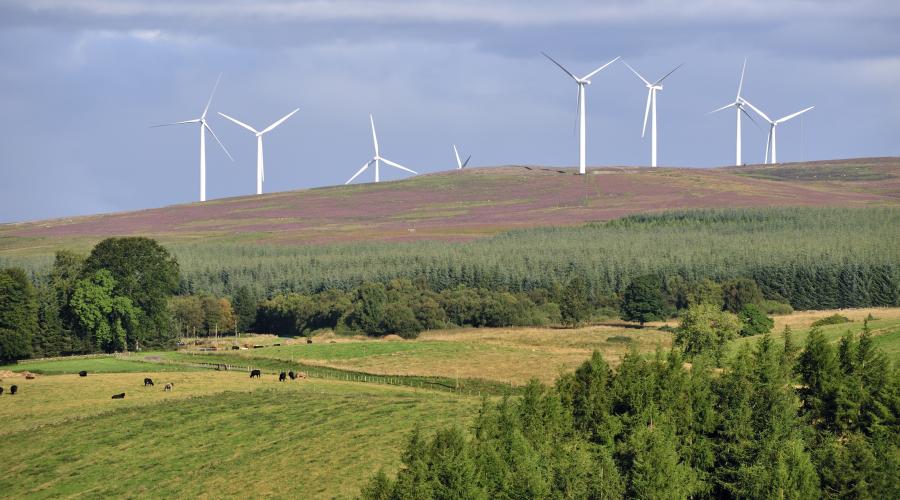What are green tariffs?
Green tariffs are programs in regulated electricity markets offered by utilities that allow large commercial and industrial customers to buy bundled renewable electricity from a specific project through a special utility tariff rate.
How do green tariffs work?
With green tariffs, utilities supply your company with up to 100 percent renewable power from either projects that they own or independent power producers in the region. Green tariff programs tend to vary in the way the utility procures green power for your company.
What are the benefits of green tariffs?
Green tariffs increase companies’ ability to access green power. In addition, they provide: A new way for large electricity customers to meet their sustainability and renewable energy goals; price predictability and potential cost savings on electricity; and the ability to point to a specific, often local, renewable energy project as the source of your electricity.
Recently, we reported that New York Governor Cuomo’s latest budget proposal includes a provision that would override a portion of the city’s Local Law 97 (LL97). The provision allows building owners to buy renewable energy credits (RECs) from wind and solar plants upstate. Utility green tariffs expand the opportunity for organizations in traditionally-regulated states to buy bundled green power beyond utility green power products and unbundled RECs. As global temperatures continue to warm, ‘green’ or renewable energy tariffs are becoming increasingly popular with large companies who want to lessen their footprint and show clients and investors they care about the fate of the world. As a result, many more energy suppliers now offer green tariffs. That begs the question: What exactly are green tariffs? In this article, we’ll explain what they are, how they can help companies and businesses who use them, and how EnergyWatch can assist.
What Are Green Tariffs?
Green tariffs are programs in regulated electricity markets offered by utilities that allow large commercial and industrial customers to buy bundled renewable electricity from a specific project through a special utility tariff rate. They are approved by state public utility commissions and allow for larger commercial and industrial customers to buy bundled renewable electricity from a specific project/developer through a special utility tariff rate. This provides these larger energy customers an option to meet their varying sustainability and renewable energy goals, reduce long-term energy risks, and demonstrate commitment to the development of new renewable energy projects.
How Green Tariff Programs Work
Companies in regulated electricity markets can use green tariffs if they are available. Additionally, companies must meet the green tariff program’s eligibility requirements. The standards for eligibility vary between green tariff programs, so you should check with your local utility to find out if your company qualifies.
With green tariffs, utilities supply your company with up to 100 percent renewable power from either projects that they own or independent power producers in the region. Green tariff programs tend to vary in the way the utility procures green power for your company. Below are the three most common versions of program:
- Some programs allow you to choose a “market-based rate”—i.e., the wholesale electricity market price.
- With other programs, your company engages directly with the renewable generation project.
- Or, the utility facilitates your green power purchase through a power purchase agreement.
All About Suppliers
When choosing a supplier that offers green tariffs, keep in mind that some suppliers are “greener” than others when it comes to how much they support renewable energy. For example, not all suppliers own solar and wind farms – they may simply have contracts to buy power from renewable generators. By law, energy firms are required to publish details of what percentage of the electricity they generate comes from renewable sources and what comes from fossil fuels or nuclear power. This information should be available on the supplier’s website or on your energy bill.
The Price of Green Tariffs
Nowadays, the price difference between green and non-green tariffs is quite small. Investment in infrastructure, along with rising demand has helped lower the cost of green tariffs. They are still somewhat pricier than regular tariffs, but not as much as they were at the start.
The Benefits of Green Tariffs for Your Company
Green tariffs are an important innovation that increases companies’ ability to access green power. In addition, green tariffs provide:
- A new way for large electricity customers in regulated markets to meet their sustainability and renewable energy goals
- Price predictability and potential cost savings on electricity
- Organizations with the ability to point to a specific, often local, renewable energy project as the source of its electricity
Notable Companies Using Green Tariffs
A number of tech giants, like Apple and Google, use green tariffs. Apple purchases renewable energy through Nevada Energy’s GreenEnergy Rider program, and Google utilizes North Carolina utility Duke Energy’s green tariff. In addition, a new type of “subscriber-style” green tariff, pioneered by Puget Sound Energy (PSE), has attracted companies REI, Starbucks, and Western Washington University.
How EnergyWatch Can Help
The process of understanding and managing all the components and risks that come with procuring renewable energy is complex and tedious, but it is often necessary to make strategic energy purchases. Your energy procurement strategy should align with overall facility operations, and your energy rate consultant should understand how to structure contracts for demand-supply optimization. Proper structure and timing of electricity supply contracts can result in hundreds of thousands of dollars in additional supply-side savings / or cost avoidance. Contact us to see how EnergyWatch makes it easier by providing market expertise and ensuring supply contract decisions are optimized for future operations at your facility. Additionally, our software, WatchWire, will track your contracts to ensure their performance is meeting expectations.
 Top Sustainability Trends to Watch in 2025
Top Sustainability Trends to Watch in 2025

 Log In
Log In








